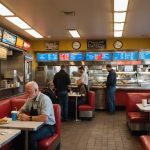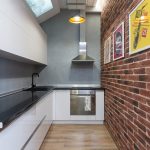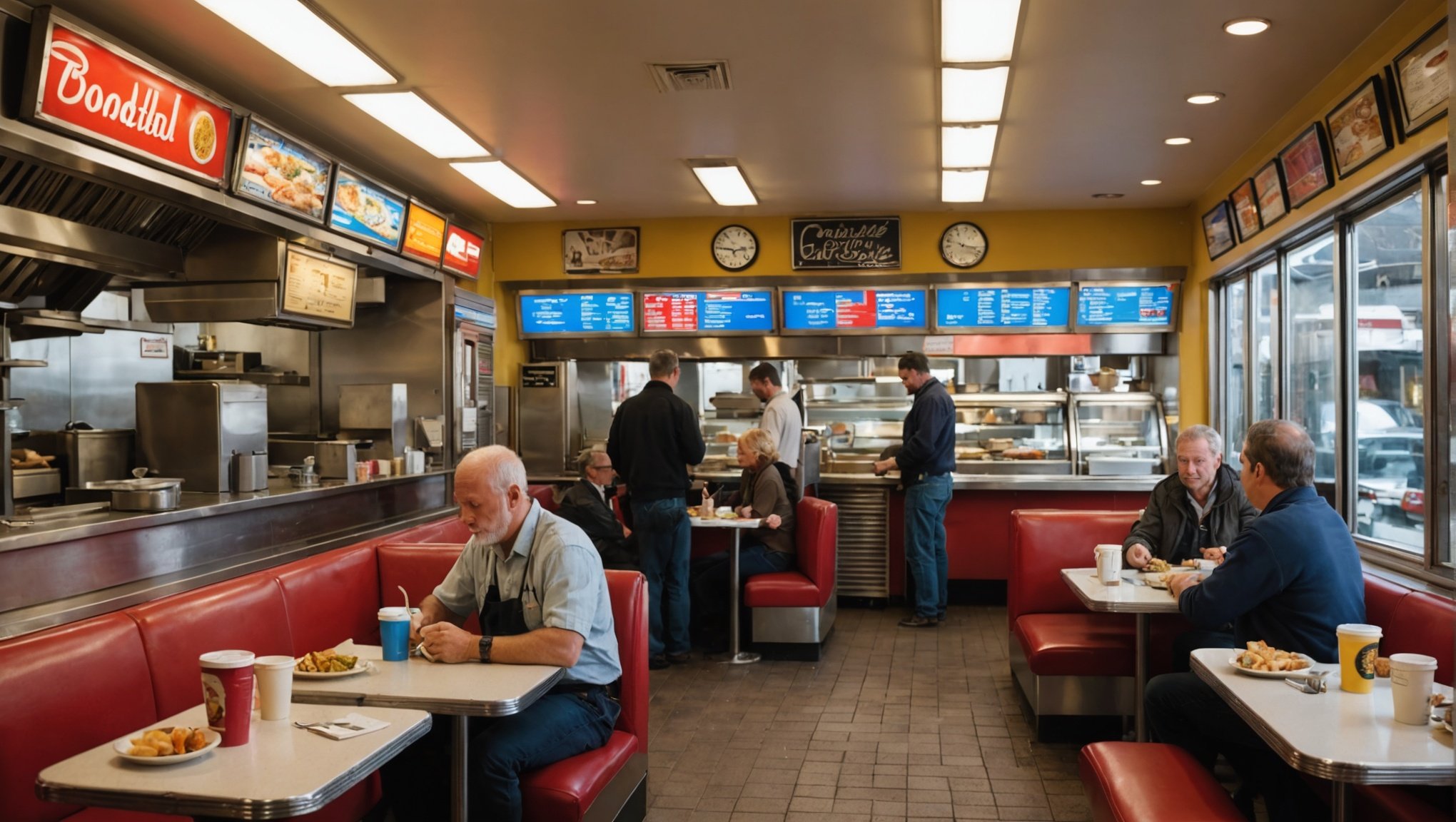The joy and satisfaction of running a successful restaurant are boundless. But it does come with its own set of challenges, especially during peak hours. The pressure to maintain consistent food quality and service, dealing with a surge of customers, managing inventory, and coordinating among staff can be overwhelming. It is during these challenging times that your management skills, efficiency, and technology come into play. So how can you uphold the same level of food quality and service during your diner’s busiest hours? Let’s delve into it.
Improve Efficiency in Your Kitchen Operations
In the heart of any restaurant lies the kitchen; it’s where all the magic happens. However, the kitchen can also be the source of bottleneck during peak hours if not managed efficiently. Optimizing your kitchen operations is key to maintaining food quality and providing timely service.
There are several ways to enhance the efficiency of your kitchen. First, ensure that the kitchen layout is designed in a way that allows for easy movement and access to appliances and ingredients. This will reduce the time taken to prepare dishes and increase the efficiency of your kitchen staff. For instance, placing frequently used items in easily accessible areas can drastically cut down preparation time.
Second, invest in quality kitchen equipment that can withstand the pressure of peak hours. High-performance appliances not only speed up cooking times but also ensure food is cooked evenly and to perfection, preserving the taste and quality of your dishes.
Lastly, consider implementing kitchen display systems (KDS). These technology systems streamline communication between the front-of-house and back-of-house teams, reducing order errors and enhancing overall operational efficiency.
Streamline Your Staff Management
A well-coordinated staff is crucial for smooth operations during busy hours. However, managing your staff efficiently isn’t as simple as it seems. It requires careful planning, clear communication, and mutual respect among all team members.
Start by ensuring you have enough staff scheduled during peak times. This will reduce the workload on individual staff members and ensure customers receive prompt service. However, having more staff doesn’t necessarily mean more efficiency. It’s important to assign specific roles to each staff member based on their skills and experience. This will prevent confusion and ensure that everyone knows exactly what they’re supposed to do.
Training your staff regularly is also crucial. This includes not only cooking techniques and menu knowledge but also customer service skills. Remember, the dining experience isn’t just about the food; it’s about the overall experience your customers have at your restaurant.
Regularly Update Your Inventory Management
Inventory management is a fundamental part of running a restaurant. Having an efficient inventory system ensures you have enough ingredients to meet the demand during peak hours while preventing food waste.
First and foremost, you need to have a clear understanding of your menu’s popularity. Knowing which dishes are most and least popular can help you plan your inventory accordingly. This not only ensures the availability of ingredients but also helps in maintaining the freshness of the food served.
Consider utilizing a restaurant inventory management software. These systems help you track your inventory levels in real-time, detect patterns, forecast future sales, and automate purchasing orders. By having a clear overview of your inventory, you can ensure consistent food quality throughout the day.
Harness the Power of Technology
In the digital age, technology plays a crucial role in improving restaurant operations. From inventory management to online ordering, technology can enhance efficiency and customer service, even during peak hours.
Invest in a reliable restaurant management software. These systems can handle everything from reservations and waitlists to payment processing, freeing up your staff’s time to focus on providing excellent service.
Implementing self-ordering kiosks or tablets can also be beneficial. These devices enable customers to place their own orders, reducing the pressure on your staff and minimizing order errors. Some systems even offer personalized menu suggestions based on customers’ previous orders, enhancing their dining experience.
Focus on Consistent Customer Experience
While maintaining food quality is paramount, it’s equally important to provide a consistent customer experience. This involves everything from the moment customers walk into your restaurant until they leave.
First impressions matter. Ensure your customers receive a warm welcome as soon as they step into your restaurant. This sets the tone for their overall dining experience.
Ensure your staff is attentive to the customers. Quick service should not compromise the quality of customer interactions. Train your staff to be patient, respectful, and attentive, even during the busiest hours.
Remember, everyone appreciates feeling special. Small gestures, like remembering a regular customer’s favorite dish or customizing the menu based on dietary preferences, can go a long way in creating a memorable dining experience.
Maintaining consistent food quality during peak hours in a busy diner might be challenging, but with the right mix of efficient operations, well-trained staff, smart inventory management, and modern technology, it is certainly achievable. These strategies can not only ensure the quality of your food and service but also enhance your restaurant’s reputation, ultimately leading to business growth.
Review Customer Feedback Regularly
To maintain consistent food quality during peak hours in a busy diner, a significant channel of information is customer feedback. This information is essential for understanding your customer’s perspective, what’s working, and what needs improving.
Start by encouraging customers to leave reviews, whether it’s through a feedback system within your restaurant or online platforms like Yelp and Google. Refrain from being defensive to negative reviews, instead see them as opportunities for improvement.
Analyzing feedback helps identify common issues that might be affecting your restaurant operations. For instance, if multiple customers complain about long wait times or cold food, it might be an indication that your kitchen speed needs improvement.
Additionally, positive feedback can provide insight into what you’re doing right. If customers consistently praise specific menu items or customer service, continue doing what you’re doing and even consider ways to improve further.
Remember, the goal of customer feedback is to enhance the dining experience and overall customer satisfaction, which in turn leads to repeat customers and business growth.
The Need for Adaptability and Forward-thinking
In the restaurant industry, adaptability and forward-thinking are key to survival and success. With trends constantly evolving, staying ahead of the curve can help ensure your restaurant does not just survive, but thrives.
This includes food trends, which can shift rapidly. Keeping an eye on what’s popular can help you adapt your menu items to fit customer preferences. However, it’s important to balance this with maintaining your restaurant’s identity. You don’t need to incorporate every trend; instead, pick those that align with your restaurant’s concept and brand.
Another aspect of forward-thinking involves sustainability practices. With increasing concerns about climate change and waste, customers today are more likely to support restaurants that are environmentally conscious. This can be as simple as reducing food waste through smart inventory management or more complex initiatives like sourcing locally grown ingredients.
Remember, being adaptable and forward-thinking is not just about following trends, it’s about leading the change and setting the standards in the industry.
Conclusion: The Blend of Efficiency, Consistency, and Adaptability
Running a successful restaurant involves a delicate balance of efficiency, consistency, and adaptability. Maintaining consistent food quality during peak hours is certainly a challenge, but with the right strategies in place, it is a conquerable one.
Firstly, streamlining operations, whether it’s in the kitchen or staff management, is essential for managing high-volume periods without compromising on food quality. Secondly, consistency in both food and service is key to customer satisfaction and repeat business. It’s not sufficient to serve great food once; it needs to be a norm. Lastly, being adaptable and forward-thinking can help your restaurant stay relevant and loved in a constantly evolving market.
Remember, it’s not just about serving food but creating a memorable dining experience. It’s about that insightful funny comment the waiter made, the love and support shown by the staff when you had special requests, the quick service that made you celebrate, and the overall feeling that they like having you there – not just another number in the queue.
Managing a busy diner during peak hours might require a longer contribution and letting go of some control, but the results – a popular, successful restaurant with high customer satisfaction – are worth it. Set your standards high, strive for excellence and the rest will follow. And always remember, it’s the customers who make a restaurant great, and they’re the ones we’re here to serve.






